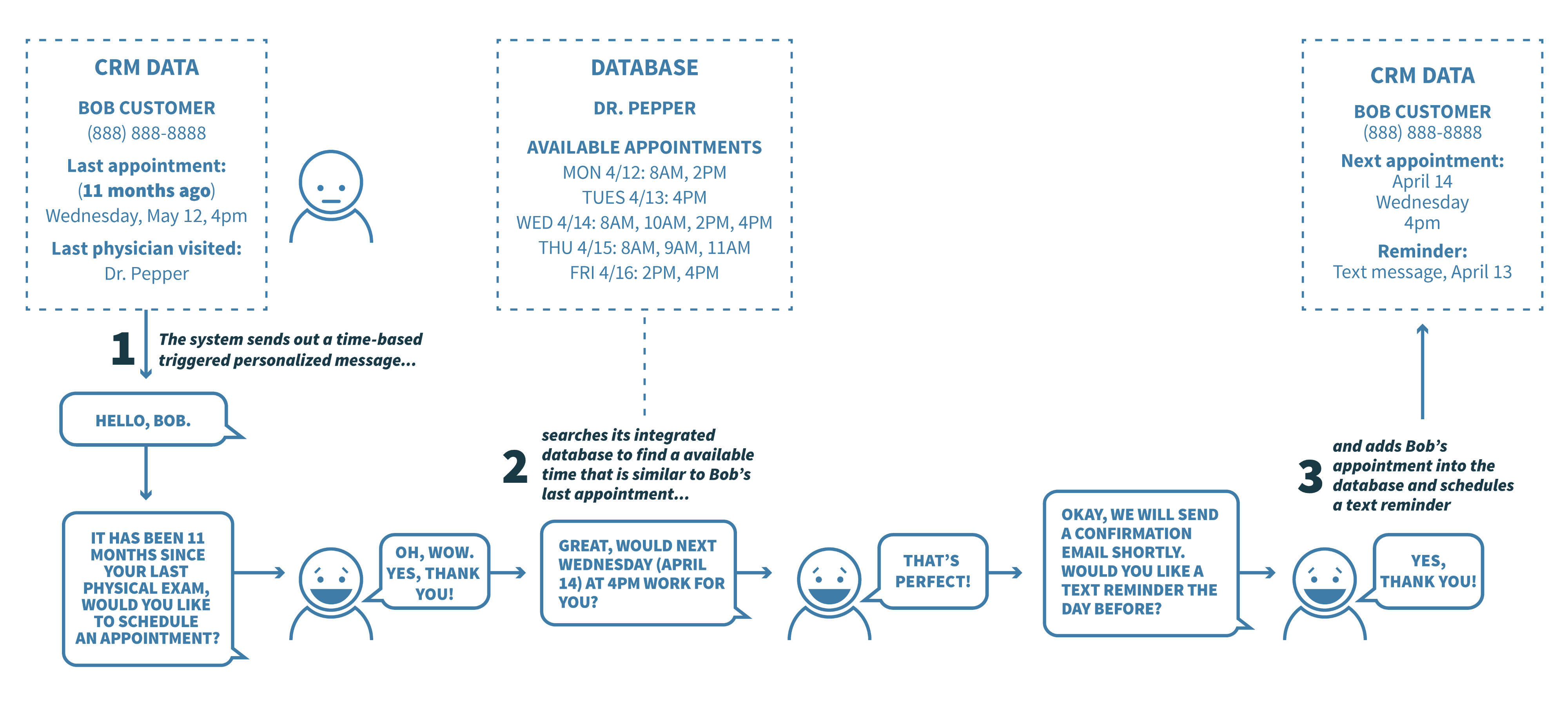
post
June 2, 2015
What Can You Do to Kickstart Your Self-Service?
Today’s customer service is becoming increasingly digital—35% of interactions now take place on digital channels. In response, more and more businesses are providing support across a variety of digital channels, including but not limited to SMS, social media, and web chat. And while the use of these channels is growing rapidly, the use of digital self-service channels isn’t far behind.
Case in point: In 2011, Gartner predicted over 85% of the customer experience would be managed without a human by 2020. The industry is certainly trending in this direction—Forrester found that self-service usage increased from 67% in 2012 to 76% in 2014. If we follow Forrester’s trajectory, by the end of 2016 self-service usage could reach 84% penetration, meaning Gartner’s prediction might come even sooner than realized. But let’s take a look at where self-service is now.
Where self-service is now
Self-service use may be on the uptick, but most companies have not actively expanded self-service beyond the Web. Research from technology evaluation hub Software Advice found that most industries provide self-service predominantly online. While Web self-service may have reached 100% penetration among businesses thanks to online knowledge bases and forums, businesses are lagging on other digital channels:
- 39% offer email self-service
- 30% offer Twitter self-service
- 29% offer mobile self-service
- 29% offer Facebook self-service
- 25% offer chat self-service
- 19% offer SMS self-service
- 15% offer instant message self-service
It’s important to consider that all of the channels listed above would require significant development to provide quality self-service. Web self-service is mostly made up of knowledge bases and forums, meaning businesses only have to add a new webpage, but include customer data to make the experience better and more relevant. It’s also important to remember that self-service isn’t a channel itself–it’s an extension of an existing channel. However, only 56% of companies have added self-service, and that’s not even on every channel.
Regardless of where companies are with self-service, over 50% of customers think it’s important to solve issues themselves, and despite companies’ modest self-service offerings, As mentioned, Forrester found self-service use increased to 76% in 2014. Companies that add self-service stand to benefit in the following ways:
- Over 60% of businesses found self-service improved or considerably improved the call abandonment rate (Software Advice)
- Over 75% of businesses found self-service improved or considerably improved the speed to answer (Software Advice)
- 45% of companies offering web or mobile self-service have reported an increase in site traffic and a decrease in phone calls. (Destination CRM)
- By adding self-service, a typical utility could see $1-3 million in annual savings. (Accenture)
So how can businesses go about adding self-service and receive better even better ROI than the stats above? In two ways: they can implement integration and automation.
Automation
Today’s customers hate to wait for coffee, let alone customer service. A study conducted by Harris Interactive and commissioned by OneReach found that 81% of customers are frustrated waiting on hold over the phone or on the computer. Similarly, Accenture research found that 88% of customers consider speed one of the most important parts of their customer experience.
Luckily, customers don’t need to wait on hold or weave through an IVR to get answers. Oftentimes, they’ll have questions that can be resolved without the help of an agent, like asking for store hours or resetting a password. By adding automation, companies can get customers the answers they need in a timely manner while letting agents handle more pressing cases. What we’ve found is that many call centers have a high percentage of calls that can be handled through automation. For example, some of our customers have found one use case equates to 40% or higher call volume–either to “reset password” or ask “where’s my order.” Both cases could be automated and have huge cost saving and time saving benefits—Forrester research found that a live agent call can cost between $6-12, while an automated interaction can cost as little as 25 cents.
But automation doesn’t just have to be used for simple, inbound interactions—it can also be used for more complicated interactions.
For example, let’s say Bob is due for his annual physical. An automated communication flow could 1) send out a text notification to anyone who hasn’t been in for 11 months, 2) recognize the last doctor they talked to and the time the last appointment was scheduled to try, and 3) make the interaction as quick and seamless as possible. This lets Bob get an appointment set up quickly without needing to interact with staff. Of course, patients prefer different channels, so the same could happen via automated call or email.
How to add automation: You could hire a developer to add self-service to your existing channels, but a more cost-effective solution is to find software that lets you build automated logic on the channels customers use. A good solution would provide the following capabilities:
- reporting/analytics for individual and cross-channel experiences
- seamless integration with other channels
- the ability to create omnichannel experiences which allows multichannel use at the same time
Integration
Sometimes, customers will want to switch with a live agent, and that’s completely fine. What they don’t want to do is start their conversation over—Accenture found that 91% of customers are frustrated by having to contact a company multiple times for the same reason. Similarly, 89% are frustrated by having to repeat their issue to multiple representatives. Equally bad: over 53% of contact centers don’t pass information when a customer drops out of self-service.
Integration usually means “lots of time and money,” scaring off businesses that could potentially benefit from it. By using a platform like OneReach, businesses can let customers switch between channels and still maintain context, quickly and without high costs of development. If a customer switches from text message to voice, an integrated (or omnichannel solution) would track where the conversation left off so that the agent knows where to start. This creates a more seamless experience for the customer and a more informed experience for the agent, which ultimately creates a better overall customer experience.
As mentioned above, most businesses are primarily providing Web service. However, the use cases are endless–You could send customers to a web or text channel to avoid hold times by using channel pivot, which lets customers seamlessly switch channels without losing context. Similarly, you could promote adoption of mobile apps with messages in the IVR or over SMS.
But integration isn’t just limited to channels—it also means integrating channels with existing data sources. Let’s take another look at the example above.
The automated text message 1) greeted Bob by name, 2) asked if he wanted to schedule an appointment, 3) presented him with a time his doctor was available based around the doctor’s schedule, 4) then set up a follow-up message. The automated text messages couldn’t deliver that information without 5) being integrated with a CRM (for Bob’s name and attending physician) and 6) a scheduling system (for Bob’s doctor’s appointment times). This integration goes both ways, however—the information from the texts has to be passed back to the CRM and scheduling system so that Bob’s appointment is on record.
How to add integration: Currently, 60.6% of contact center technology systems aren’t integrated, and over 48% of contact centers said one of the greatest challenges in implementing successful self-service was integrating different systems. Find solutions like OneReach that let you integrate with many systems. That way, you have an out of the box solution that is ready to roll out, but can also be customized to your needs.We’ve found that some integrations that aren’t available out of the box can be done in minutes or just a few weeks to get what is needed, based on the scale of the project and the overall goal.
Conclusion
Customer use of self-service is increasing, and the fact that businesses are adding self-service is a promising sign. Still, there’s some work to be done to provide the experience your customers are expecting while reaching Gartner’s magic number of 85%. By adding powerful automation and integration to their self-service initiatives to provide quick and relevant answers to customers (or to the consumers), businesses will be able to bring the customer experience of the future into the present.
To learn more about automating and integrating your self-service, download our new ebook here.
Stay up to date
Latest Articles






